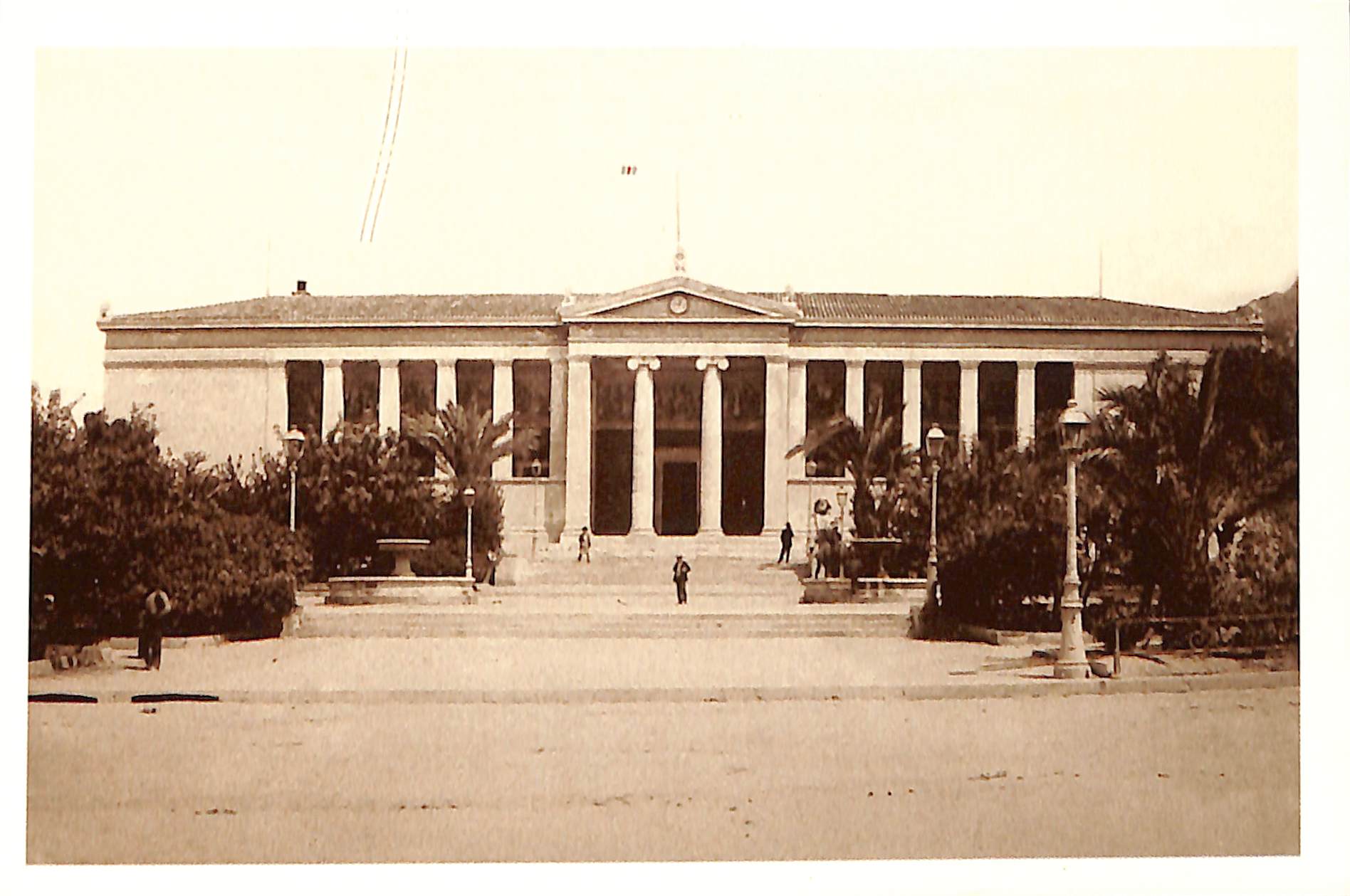
4/28/2025 4:12:29 PM
The University of Athens
The University of Athens, also known as the National and Kapodistrian University, is part of the Neoclassical Trilogy (Academy, University, and Library). It was constructed between 1839 and 1864, following the design of Danish architect Christian Hansen, the brother of Theophil Hansen. The project was overseen successively by H. Hansen, A. Theofilas, and L. Kaftantzoglou. The frescoes on the facade were designed by the Bavarian painter Rahl and executed by the Polish painter Łeviński. The construction costs were covered by King Otto, the ruler of Serbia, and Greek expatriates. The building consists of a set of volumes forming a double "T," with two symmetrical courtyards. The facade displays strict symmetry, with an arcade of rectangular pillars, emphasized by an Ionic portico. The bases of the columns and the capitals of the portico are faithful replicas of the corresponding elements of the Propylaea on the Acropolis. The external statues complete the composition of the facade, which is clearly divided into "base," "trunk," and "crown." In 1978, restoration work was done on part of the interior to address modern interventions. In 1982, the roof was repaired, and in 1984, part of the painted decoration inside the building was conserved. In 1987, maintenance and repainting of the facades were carried out. Finally, an auditorium with modern specifications was created inside the building.
Pictured: The University of Athens in 1890. ©Municipal Photography Museum of Kalamaria ‘Christos Kalemkeris’.

